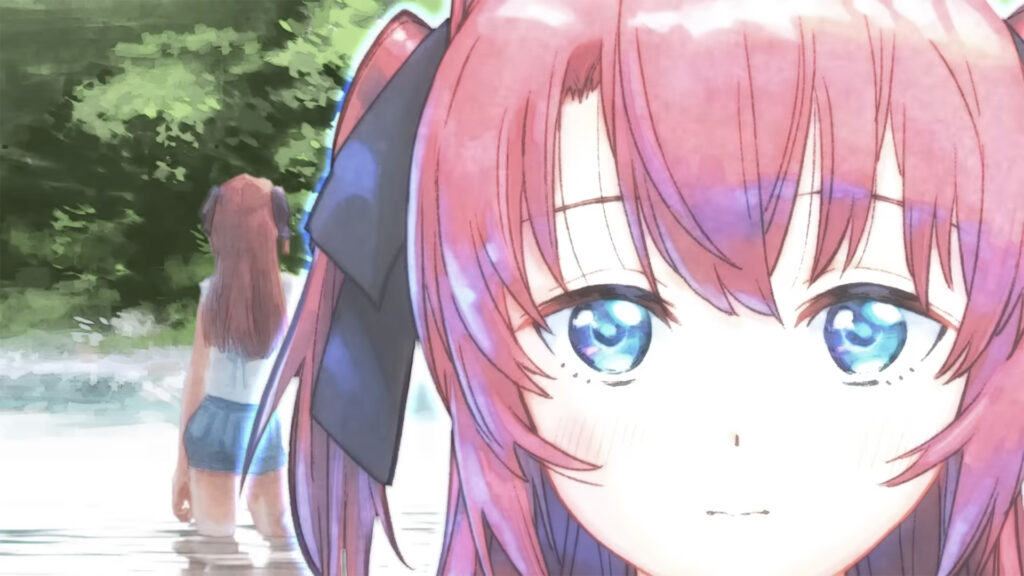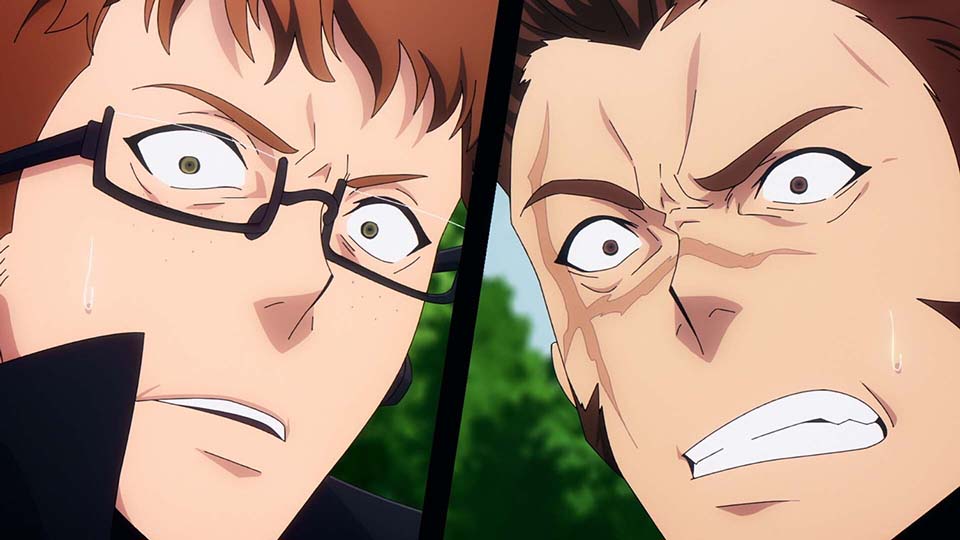If there’s one concept that defines ZENSHU from start to finish, it’s creation. The series begins with Natsuko struggling to draw the storyboards for her latest anime project because she’s never experienced a first love and can’t fully relate to the story, a struggle that follows her throughout the series as she finds herself in the world of A Tale of Perishing , the movie that made her fall in love with animation in the first place. In the later episodes, Natsuko’s intervention in the story brings her into conflict with Kametaro Tsuruyama, the creator of A Tale of Perishing , which highlights one of ZENSHU ’s core ideas: the fear and risk that comes with putting any creative work out into the world. NOTE: MAJOR spoilers for ZENSHU throughout! Tsuruyama resents Natsuko’s changes to the world of A Tale of Perishing , treating them as insults to all the work she put into making the film her way. She’s the one who put so much effort into creating these characters and this world, so why should anyone else get to come in and change her hard work? She insists that nothing Natsuko does matters, that she can’t change the story Tsuruyama created. To Tsuruyama, that entire world is hers and will go the way she wants it to, regardless of what some upstart wants to change. Natsuko displays a similar attitude, albeit in a different way. When the Voids begin imitating Natsuko’s previous drawings, it leaves her guilt-ridden and traumatized, fearing to draw anything because it could later turn into an enemy. She becomes stuck on the idea that she has to draw something that only she can, something that couldn’t possibly be turned against her. In the end, all this does is paralyze her, leaving her unable to draw anything even with Voids bearing down on her. It's inside the Void that this fear is most manifested: Natsuko’s tormented with visions of her completing the movie, only for everyone to hate it. Her friends and coworkers turn against her, and all of the people who ever believed in her mock her until she utterly gives up on ever drawing again. What breaks her out of her despair is hearing Unio remind her that he and Luke still love her work, that even if her work gets misinterpreted or hated by some people, there are others who will still love it and have their lives enriched by it. What Natsuko learns, which Tsuruyama never fully grasps, is that the act of creating means giving up some degree of control over what happens next. Tsuruyama wants her work to stay exactly as she made it, which is impossible (particularly when it literally comes to life). RELATED: Hesitant To Try Isekai? Watch ZENSHU Once you put something out into the world, people are inevitably going to theorize, criticize, think up their own endings, and do everything else fans do. The Voids using Natsuko’s creations to do harm doesn’t negate the fact that every one of her drawings was done to help people, and did help them. The Ultimate Exister saved Memmeln from her existential despair, Serval Cat Mask inspired Destiny to improve herself and take initiative in her life, and every drawing helped fight off Voids and save lives. Even if she can’t control every consequence, Natsuko’s drawings unquestionably added something positive to the world. Nothing the Voids do can change that. In turn, Natsuko helping the world of A Tale of Perishing come to a happy ending isn’t a rejection of Tsuruyama’s hard work, quite the opposite. Everything Natsuko changes is done precisely out of love for A Tale of Perishing and all of its characters. Even though it was a massive flop, A Tale of Perishing was a life-changing experience for Natsuko, inspiring her to study animation and eventually become a famous director herself. When she saves Destiny, stops Unio from sacrificing himself, and finally saves Luke from his despair, it’s all done because she loves the characters Tsuruyama created and wants to see them get a happy ending. The fact that she cares so much about Tsuruyama’s creations is a validation of everything Tsuruyama put into it, not a rejection. RELATED: How The Apothecary Diaries Explores the Beautiful Nuances in Female Relationships Every drawing Natsuko does stems from this love (her first love, in fact). The little voice in her pegboard encouraging her to draw in moments of crisis turns out to be her younger self, that little girl who fell in love with A Tale of Perishing . That girl reminds Natsuko that the Voids’ imitations of her drawings can’t take away from the passion that originally drew her to animation. And in the face of that passion, all her fears of rejection, of losing control of her work, vanish like nothing. She became an animator because she loved A Tale of Perishing , and she gets back up and keeps fighting because she still loves it. It's that exact love that carries her through the final battle with the Ultimate Void. Even in the face of the world being destroyed and her friends vanishing, Natsuko keeps drawing Luke. Luke was the character she fell in love with as a child and the person she fell in love with as an adult, so she knows she can draw him perfectly and believes deep down that he will win. Even with her body fading away, Natsuko draws one last Luke, this time as he was when she first fell in love with him as a person. This Luke, who only Natsuko has seen, finally defeats the Ultimate Void and fixes everything, just like Natsuko promised. And when she returns to reality, Natsuko’s newfound trust in others and willingness to risk giving up control turns her new film into a huge hit. Sometimes creating something means living with the fear that what you made might be rejected, or misinterpreted, or taken in ways you never imagined it would, and that’s OK. ZENSHU is a reminder that creating something is its own reward, regardless of what happens next. Sometimes, you just have to draw.


